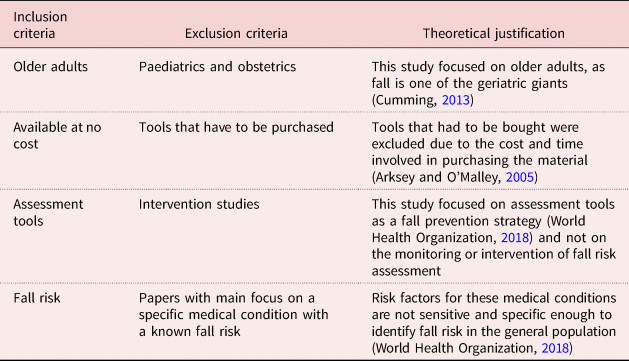Dementia Fall Risk Things To Know Before You Get This
The Only Guide to Dementia Fall Risk
Table of ContentsThe Ultimate Guide To Dementia Fall RiskA Biased View of Dementia Fall RiskThe 5-Minute Rule for Dementia Fall RiskThe Best Guide To Dementia Fall Risk
An autumn risk evaluation checks to see how most likely it is that you will drop. The evaluation normally consists of: This includes a collection of questions regarding your total wellness and if you've had previous drops or issues with balance, standing, and/or walking.STEADI consists of screening, analyzing, and intervention. Treatments are recommendations that may minimize your danger of dropping. STEADI includes three steps: you for your danger of succumbing to your danger elements that can be boosted to attempt to avoid falls (as an example, equilibrium problems, damaged vision) to decrease your danger of falling by making use of efficient approaches (for instance, giving education and sources), you may be asked a number of questions including: Have you dropped in the past year? Do you really feel unstable when standing or walking? Are you fretted about falling?, your provider will certainly evaluate your strength, equilibrium, and stride, making use of the adhering to autumn evaluation tools: This examination checks your gait.
If it takes you 12 secs or even more, it may suggest you are at higher threat for a fall. This examination checks stamina and balance.
The settings will certainly get harder as you go. Stand with your feet side-by-side. Move one foot halfway forward, so the instep is touching the huge toe of your other foot. Relocate one foot completely before the various other, so the toes are touching the heel of your other foot.
The Basic Principles Of Dementia Fall Risk
Most falls occur as a result of multiple contributing elements; therefore, managing the danger of dropping starts with determining the variables that contribute to fall threat - Dementia Fall Risk. A few of the most appropriate risk variables consist of: Background of prior fallsChronic clinical conditionsAcute illnessImpaired gait and balance, lower extremity weaknessCognitive impairmentChanges in visionCertain risky medications and polypharmacyEnvironmental aspects can likewise increase the risk for drops, including: Poor lightingUneven or harmed flooringWet or unsafe floorsMissing or damaged handrails and grab barsDamaged or incorrectly equipped tools, such as beds, mobility devices, or walkersImproper use of assistive devicesInadequate supervision of the people living in the NF, consisting of those who show hostile behaviorsA successful loss danger management program calls for an extensive professional assessment, with input from all participants of the interdisciplinary team

The treatment strategy must also include interventions that are system-based, such as those that advertise a safe setting (appropriate lighting, handrails, get bars, and so on). The effectiveness of the treatments must be examined occasionally, and the care plan revised as required to mirror modifications in the autumn threat assessment. Carrying out a loss risk management system using evidence-based best technique can decrease the frequency of drops in the NF, while go to this site restricting the potential for fall-related injuries.
The Ultimate Guide To Dementia Fall Risk
The AGS/BGS standard advises evaluating all grownups aged 65 years and older for fall risk yearly. This testing is composed of asking patients whether they have actually fallen 2 or even more times in the past year or sought medical interest for a loss, or, if they have actually not dropped, whether they feel unstable when walking.
Individuals who have actually dropped once without injury must have their equilibrium and stride evaluated; those with gait or balance irregularities ought to obtain added analysis. A background of 1 loss without injury and without stride or balance issues does not warrant further analysis past continued annual autumn danger testing. Dementia Fall Risk. An autumn threat assessment is needed as part of the Welcome to Medicare examination

8 Easy Facts About Dementia Fall Risk Described
Recording a falls history is just one of the quality signs for fall prevention and monitoring. An important component of danger analysis is a medication testimonial. A number of courses of drugs boost autumn risk (Table 2). Psychoactive medications particularly are independent predictors of falls. These drugs often tend to be sedating, change the sensorium, and hinder balance and gait.
Postural hypotension can usually be relieved by minimizing the dosage of blood pressurelowering drugs and/or stopping medications that have orthostatic hypotension as a negative effects. Use above-the-knee support pipe and sleeping with the head of the bed boosted may also minimize postural decreases in high blood pressure. The advisable aspects of a fall-focused physical exam are displayed in Box 1.

A pull time more than or equal to 12 seconds suggests high fall risk. The 30-Second Chair Stand examination analyzes lower extremity stamina and balance. Being not able to stand up from a chair of knee elevation without using one's arms suggests increased autumn danger. The 4-Stage Balance examination analyzes static equilibrium by having the client stand in 4 positions, each gradually much more challenging.